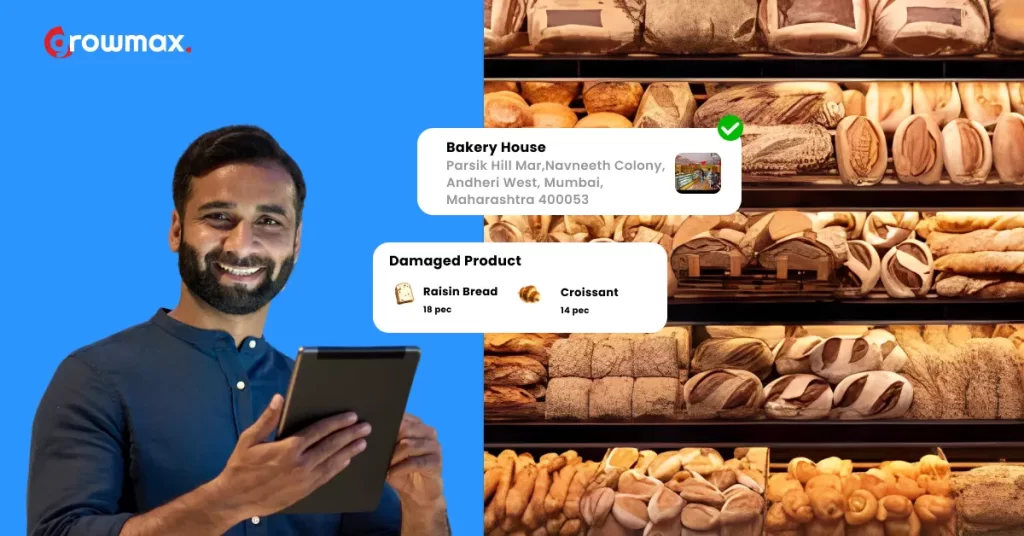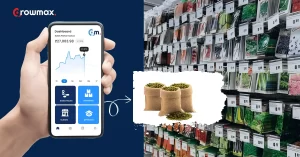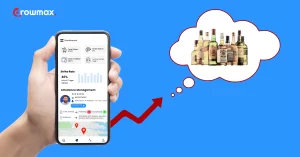Profits in the competitive bakery sector can quickly become stale in a matter of days or even hours if sales, inventory, and operations are not visible. Product freshness is short-lived, and significant revenue evaporates in the absence of real-time tracking of expiry and demand changes across retail locations.
Through working with local bakeries up to huge national chains, experts have seen closely how a perfect storm of issues brought on by a lack of insight may erode margins. However, bakeries may overcome these obstacles and continue flourishing by utilizing the appropriate technologies to meet their desired goals.
In this article, we’ll explore:
- The increasing risks of poor visibility
- How new developments offer a strategic edge
- Exemplary instances of data-driven success in real-world situations
- How to put visibility platforms into practice in your business
Let’s review the core areas where limited visibility causes bakeries to miss opportunities and lose profits unnecessarily.
The Pitfalls of Flying Blind
Bakeries relying on manual tracking or dated inventory systems face systemic blindspots that allow profits to slip through the cracks.
1. Inefficient distribution
Bakeries struggle to efficiently allocate products without visibility into expiry dates and inventory levels across different stores. Excess items expire on shelves at some locations while others face shortages.
This makes it near impossible to accurately forecast demand. And once an item expires, those potential sales are gone for good. Research by the Harvard Business Review finds that $161 billion in retail food inventory goes to waste annually in the US alone.
2. Mounting waste and returns
When products expire before selling, retailers demand refunds which eat directly into bakery profits. A 2018 study published in the Sustainability Journal found that up to 2.6% of bakery revenue can be lost to return costs.
These losses quickly multiply across a supply chain, demolishing margins. But without visibility, bakeries only notice issues after inventory has already expired and angry retailers are demanding refunds.
3. Declining retail relationships
Lack of data frequently leads to disputes between retailers and suppliers over reasons for waste and returns. As problems increase, this affects productive relationships.
Retailers lose trust in brands that seem to repeatedly have stock issues or deliver short-dated items. In a survey by Retail Insight Network, 78% of retailers said supplier performance greatly impacts brand perception.
4. Poor customer satisfaction
Out-of-stock and shortages frustrate customers and erode loyalty. When favorite items aren’t available, consumers look to other brands that have reliability and consistency.
According to research, one-third of consumers will stop shopping at a retailer after just one or two poor product availability experiences.
5. Inefficient manual tracking
The root issue enabling these problems is reliance on manual tracking methods by sales reps or store/warehouse staff. Humans cannot feasibly gather on-the-ground insights quickly enough to redirect inventory or respond to availability issues in time.
Attempting to track expiry and sales this way results in stale, incomplete data that offers little strategic value. Disputes frequently arise between reps and retailers regarding returned or expired goods.
The Impact of Data Visibility
The risks of flying blind make it essential that bakeries comply with digital visibility solutions. Data analytics empower bakeries to:
- Optimize inventory to reduce waste
- Forecast demand to increase sales
- Strengthen retailer relationships
- Improve customer satisfaction
Let’s explore how improved visibility in each area can mean big bottom-line results.
1. Managing Inventory to Minimize Losses
Real-time monitoring of expiry dates and inventory levels across the supply chain allows bakeries to redistribute products before they expire proactively.
Rather than issuing refunds on expired goods, bakeries can redirect items from low-traffic locations to stores with high demand. This keeps products selling up until the use-by date.
A case study from a food analytics provider found that a mid-sized bakery was able to reduce expired returns by 73% using inventory visibility tools. That returned over $120,000 in cost savings from lower refunds issued.
2. Forecasting Demand to Boost Sales
Granular sales data mapped to specific retail locations provides visibility into buying behaviors and trends. Bakery managers found out about fluctuations in demand within regions, cities, and among particular stores.
Bakeries can customize inventory levels, pricing schemes, and promotions for every location by utilizing this information. Additional stock or promotions can be allocated to underperforming zones to correct issues proactively.
Bakery Consumer Brands increased sales by 8% by using demand sensing and inventory visibility to optimize production and reduce out-of-stock sales. Intelligent forecasting and planning are invaluable for aligning supply with consumer demand.
3. Strengthening Supplier Relationships
Providing retailers with concrete reporting on expiry and inventory changes the dynamics from dispute to collaboration.
Rather than debating reasons for waste and returns, both parties can work from the same data-driven insights to enhance efficiency. Retailers also gain confidence that bakeries are committed to improving performance.
A Leading CPG analytics firm found that suppliers who provided retailers with visibility into order and inventory data saw relationship satisfaction scores improve by over 40%. Facts and figures replace guesswork to foster alignment.
4. Delighting Customers
By smoothing inventory allocation and forecasting demand, bakeries can deliver the optimal quantity of the freshest products to each store.
Shelves will be consistently stocked with customers’ favorite items. When products do expire, immediate visibility allows for rapid replenishment. Customers are delighted by this, which encourages repeat customers.
Also Read : Revolutionizing Inventory Management: The Power of Auto Stock Replenishment for Consumer Goods Brands
Rising with Visibility Technology
The bottom line is leveraging data visibility should be the top priority for bakeries seeking to reduce waste, maximize profits, and sustain growth.
Here are three actionable steps to begin harnessing these solutions in your operations:
1. Audit Tracking and Tech Gaps
Conduct an objective assessment of current visibility limitations – expired items, forecasting struggles, retailer disputes, and availability issues. Then identify technologies that can address the largest gaps through automation.
2. Analyze Data and Buy-In
Once systems are implemented, thoroughly analyze initial expiry, sales, and inventory data trends to spotlight opportunities. Then share insights cross-functionally with sales, production, and management to gain buy-in on changes.
3. Collaborate with Retailers
Proactively communicate visibility reports with retailers to reduce disputes and foster joint problem-solving. With incentives aligned, collaborate to enhance inventory turns, and availability, and reduce waste.
With real-time inventory and sales visibility, bakeries can rise above the fray of waste and inefficiency. State-of-the-art analytics platforms empower even long-standing bakeries to operate smarter, faster, and more profitably in today’s dynamic retail environment.
The stakes have never been higher, but the strategy for long-term success is within reach. GrowmaxBI can help your bakery get the insights needed to consistently deliver the goods. With the right ingredients, your business can confidently meet demand, minimize losses, and achieve rising profits for years to come.




